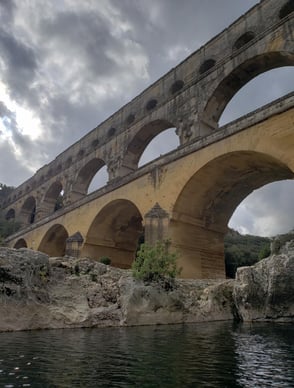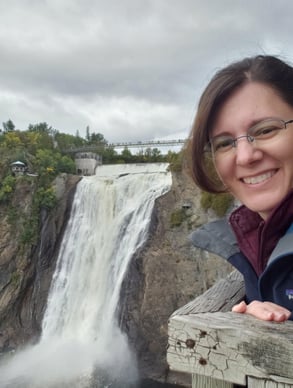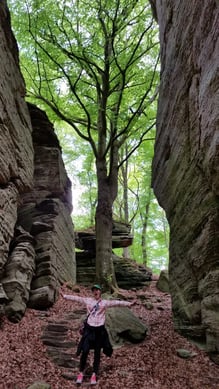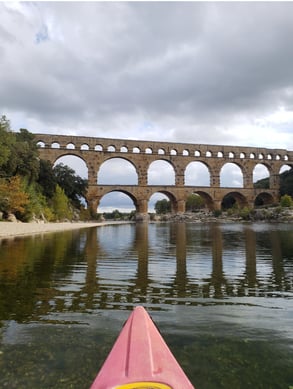

EHRA designed an expansion that implemented the installation of a new triplex lift station operating in conjunction with the existing duplex lift station.
Project totaled 640 acres including 1256 Residential Lots. EHRA designed, created construction plans, publicly bid and preformed Construction management.
The purpose of this project was to convert the existing at-grade crossing of Brazoria County Road 56 (CR 56) and State Highway 288 (SH 288) into a diamond interchange that includes a new overpass bridge and providing access to the newly developed Meridiana Development. Coordination with TXDOT, area landowners, utility companies, and Brazoria County was integral in obtaining approval and acceptance of the project. The main design challenge for this project was to accommodate double intersections on the west side of SH 288 to tie into existing access roads with two-way traffic and a new southbound on-ramp within a close proximity. EHRA coordinated with TxDOT throughout the project from preliminary concepts for the intersection and bridge through final design and construction. Each component of this project was designed in accordance with TxDOT standards and criteria.
EHRA was selected by the client to provide engineering design and to serve as District Engineer for the 2,400 acre Towne Lake Development. Our survey department retraced the overall boundary and performed a topographic survey of the site.
EHRA completed preliminary engineering, phase one environmental site assessment and schematic development for the widening of Northpark Dr. between US 59 and Woodland Hills Dr. EHRA also provided program management, drainage analysis and design, traffic engineering, environmental documentation and schematic design for the roadway, as well as grade separation at the Loop 494/UPRR railroad crossing.
EHRA conducted traffic operations and access management studies for the Northpark Dr. corridor. This corridor is approximately 2.2 miles long and has major signalized and unsignalized intersections and driveways that access various subdivisions and industrial developments. These studies laid the groundwork for the widening of Northpark Dr. from a four-lane boulevard cross-section to a six-lane boulevard complete street. The new street design includes low impact development drainage, conventional drainage, a grade separation at the UPRR crossing with mechanically stabilized earth retaining walls, two at-grade crossings for bi-directional frontage access, reconstruction of two concrete bridges over a diversion channel, intersection improvements, a roadway-adjacent multiuse path and traffic signal improvements.
Drainage analysis and design included hydrologic and hydraulic studies of both existing and proposed conditions to demonstrate that proposed project components would not adversely affect the 100-year floodplain in the area. The roadway and traffic designs contained horizontal and vertical alignments, cross-sections, plan and profile, sidewalk and bicycle accommodations, intersection layouts, traffic control plans and signing and pavement markings.
As the program management firm, EHRA coordinated with TxDOT, UPRR, the City of Houston Council District E, COH Planning and Development Department, COH Public Works and Engineering Department, Montgomery County, Harris County, HCFCD and area residents throughout the project.
I like visiting beautiful places in nature that humble me. As a 5’2” woman, it isn’t hard to feel tiny in this world, but the majestic and grandeur of how nature replenishes itself re-energizes me. I think this ignited during my Girl Scout tenure, which included camping, building fires, and going on hikes. To advance in Girl Scouts, we were required to memorize the Girl Scout Law which included statements of “using resources wisely and making the world a better place.”
When I was earning my Girl Scout Gold Award (the highest achievement within the organization, earned by only 5.4% of eligible members), what I did not realize was my project focus would end up being my passion and career- conservation, mitigation and creating sustainable community environments through the management of water with nature. My Gold Award project, coincidently, was to rehabilitate a building that had been damaged by flood waters from the Colorado River. Knowing further flooding was inevitable below 4’, the lower section of the walls were covered with plywood that could be folded up for easy dry out and functioning table space. This kept the structure functional for scout use while alleviating the need to gut and replace drywall each time the waters rose.
I entered Texas A&M University with the goal of earning a bachelor’s degree in engineering, little did I know that it was going to take some time to figure out how to match my career with my personal intrinsic motivation. While earning my undergraduate degree in Agricultural Engineering, I discovered exciting, tangible paths to make an actual difference in the world. I learned methods such as sizing agricultural ditches on farmland to ensure proper irrigation, my first real-life exposure to the mechanics of drainage. Consequently, I began to realize how much of our lives is connected through water.
My career started in stormwater quality learning about the MS4 regulations and best management practices and completing permit renewals for wastewater treatment plant discharge limits through TCEQ. I have gained experience in estimating water demands for subdivisions, locating leaks in the water system, and simulating water pressure in case of fire. From my time in Girl Scouts, I learned the intrinsic value I felt helping communities and volunteered to assist with flood damage assessments after Hurricane Ike. After this experience, I transitioned into stormwater management/hydraulics and hydrology and worked on large-scale watershed flood damage reduction planning studies to help communities impacted by flooded.
Additionally, I served as the East Reach Chair of the Green’s Bayou Coalition for seven years. During my tenure, my focus was on the benefits provided through the reduction of flooding such as recreation opportunities, economic development, and enhanced quality of life. I worked on developing Nature Preserves/Outdoor Classrooms located in the flood-prone areas to provide outdoor opportunities to expose children to nature when it is not serving its primary purpose as conveyance and storage during flooding events.
My fascination with majestic qualities of water has its place in my personal life as well. When my husband and I travel, the galleries of our phones are full of photos of waterways, interesting drainage methods and stormwater management techniques we have seen all over the world. You could say we’re pretty serious about conservation of water.
Living and working in a place like Houston where there have been major flooding incidents as well as a sprawling and exploding population brings regular challenges. I want to make the region a better place to live while protecting our natural resources and provide opportunities for our residents to explore nature. “In every walk in nature one receives far more than he seeks.” – John Muir




